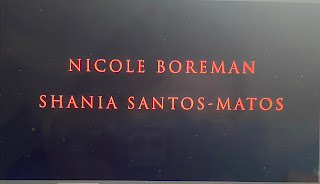Before I began writing the script to my film opening, I wanted to do research on how screenwriters within the industry tackle creating a film opening, and what steps I can take to ensure my opening properly introduces the characters and establishes their relationship.
Whiplash
During summer break, I remember I stumbled upon a video that talked about the Whiplash script, and how its most important feature was its structure. The video explained how the opening of this film immediately established the protagonist and the villain, thus foreshadowing their relationship for the rest of the movie. I learned that when writing a script, you have to convey introductory info, whether that be about the characters, or the problem that will later be resolved throughout the rest of the film. With my opening specifically, I want to focus on establishing the relationship between Valarie and Val. However, in order to properly convey their relationship to be one that takes place in the conscience, I have to put Valarie in a certain situation, allowing room for Val to react and provide necessary commentary that differentiates the conscience from reality. I was thinking of introducing a third character, perhaps an antagonist, but I haven't made up my mind just yet as I am still trying to create a scenario.
Show Don't Tell
I tend to go down rabbit holes when exploring on Youtube, so as I was conducting research, I came across another video that talked about different ways to approach a film opening. One example from the video I found interesting was its analysis on the Batman franchise openings, specifically how they focus on visually presenting the problem and villain, rather than constantly re-introducing Batman. The reason for this was that the main character is already known, especially since his name is in the title of the films, so instead of highlighting a relationship between Batman and the new villain, the film first introduces the problem that Batman will have to eventually face. What I took away from this example was that I shouldn't only rely on the dialogue to develop my opening, and instead incorporate both visuals and dialogue that ties to what is being shown, rather that explicitly say the problem.
Be Purposeful
Along with the idea of "show, don't tell", I found another video that discusses using subtext within script writing, meaning add lines that create a difference between what the character says to what they mean. The video provided a scenario where a character can say, "I'm fine", even though they aren't. While the character pretends that they feel unaffected by a certain situation, the line "I'm fine" acts as a code to actually mean that the character is in pain and is hurt. If the script were to specifically say that the character is angry or sad, then that eliminates the audience's ability to interpret the character's emotions, and how that applies to the plot of the film. Therefore, I want to make sure that my approach to writing my script does not include lines that specify the problem or the relationship that I want to create.
























